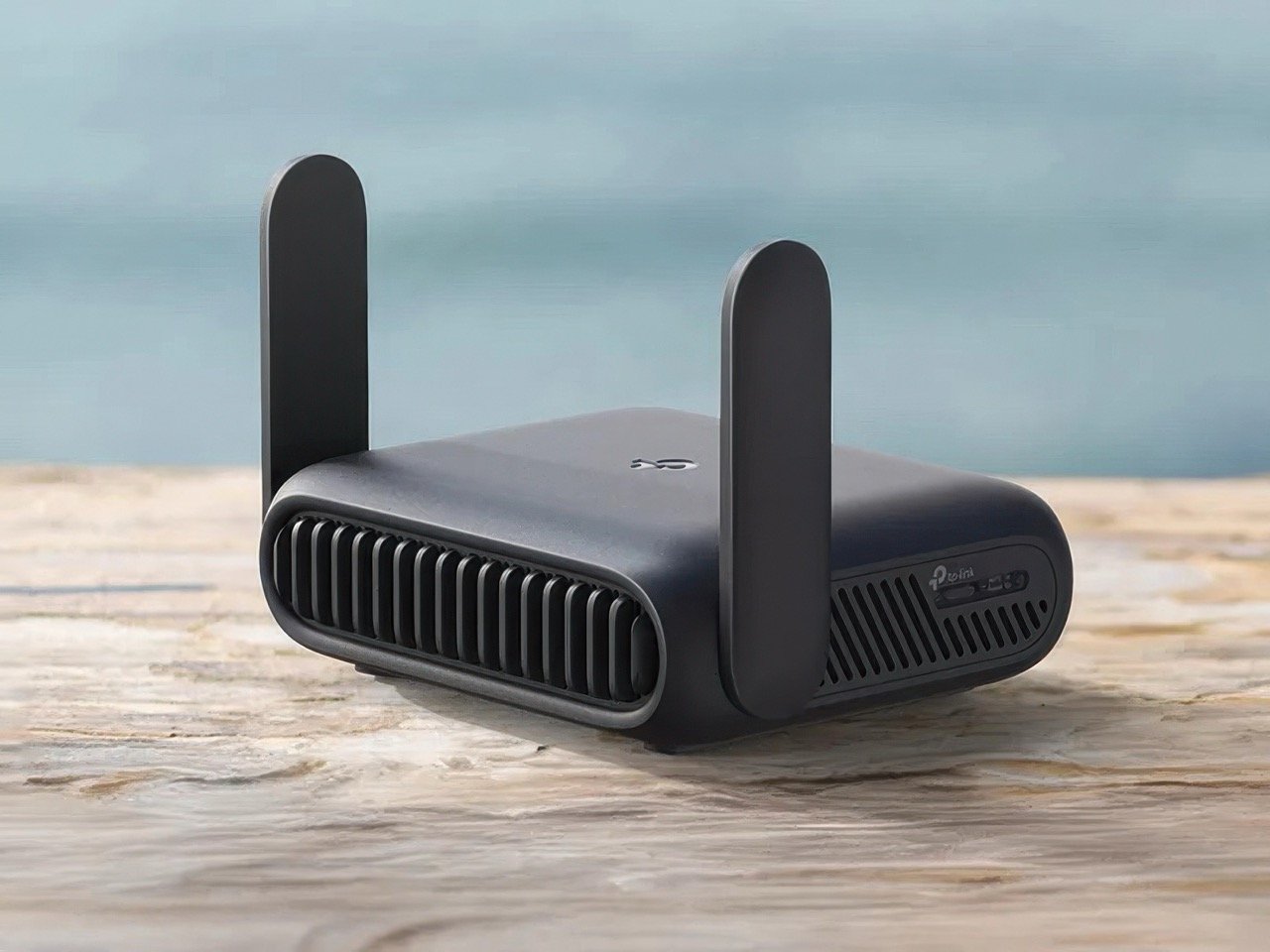Imagine you’re on holiday, you’re connecting your phone to the hotel Wi-Fi, only to rue the fact that you’ll have to do the exact same thing for your partner’s phone, your laptop, your tablet, and maybe any other devices that need a Wi-Fi connection. It’s exhausting and you know it because you did the exact same thing at the airport too, while you waited for your flight. That’s where TP-Link’s new router plans to come handy, becoming the one point of contact for all your devices. Connect it to any public Wi-Fi and it becomes your own personal secure access point. Your gadgets automatically connect to the TP-Link router because it’s a familiar device, making travel easier than ever.
While everyone’s been obsessing over massive mesh systems and gaming routers that look like alien spacecraft, TP-Link took a different approach and asked a simple question: what if we packed all that next-gen wireless tech into something you could actually throw in a backpack? The result is a compact powerhouse that delivers 3.6 Gbps speeds in a form factor that won’t make TSA agents raise an eyebrow. The timing couldn’t be better. Remote work has evolved from pandemic necessity to permanent lifestyle, and this involves dabbling with public Wi-Fi and hotspots. Digital nomads want the same familiar connectivity and blazing speeds they get at home, wrapped in something portable enough for constant travel. The TL-WR3602BE (yes, that name is a mouthful) answers that call with WiFi 7’s tri-band architecture, complete 6GHz support, and VPN throughput that actually makes sense for real-world use.
Designer: TP-Link
The TL-WR3602BE doesn’t try to hide its tech credentials behind minimalist design language. This is clearly a device built for function, with two collapsible antennas that give it that classic “router vibe” while allowing for better signal propagation. The compact black chassis houses more connectivity options than you might expect, including a 2.5Gbps WAN/LAN port that can handle multi-gigabit hotel Ethernet, a standard gigabit LAN port for wired devices, and a USB 3.0 port that supports both storage sharing and 4G/5G dongle tethering. This port flexibility means you’re never stuck without options, whether you’re in a high-tech conference center or a remote cabin with only cellular service. The physical design strikes a balance between portability and performance, avoiding the compromises that plague many travel-focused gadgets.
Under the hood, TP-Link has packed in the full suite of WiFi 7 improvements. The router supports 4K-QAM modulation (a significant jump from WiFi 6’s 1024-QAM), allowing it to pack more data into each transmission. Multi-Link Operation means your devices can connect simultaneously across different bands for improved stability and throughput. The dual-band configuration delivers 2882Mbps on the 5GHz band and 688Mbps on 2.4GHz. These aren’t just marketing numbers; they translate to real-world benefits like buffer-free 4K streaming, lag-free video calls, and quick file transfers even when sharing your connection with colleagues or family members. The processor, while not explicitly detailed in specs, handles VPN traffic at up to 450Mbps with WireGuard and 350Mbps with OpenVPN, numbers that would have been impressive for a full-sized router just a few years ago.
Despite its tiny, travel-ready design, TP-Link has implemented their full router feature set rather than a watered-down “travel edition.” This means you get comprehensive QoS controls to prioritize work calls over your kid’s gaming, guest network functionality to share connectivity without sharing your devices, and parental controls for family trips. The router’s ability to connect up to 90 devices simultaneously makes it viable for small team off-sites or family vacations where everyone brings multiple devices. The interface remains accessible through TP-Link’s mobile app, which handles everything from initial setup to network management without requiring a computer. For power users, the web interface provides deeper customization options including VPN server configuration, firewall rules, and advanced routing options.
Beyond the built-in VPN client support, which lets you route all traffic through services like NordVPN or ExpressVPN with minimal configuration, the router includes WPA3 encryption, regular security updates, and the ability to create isolated networks for untrusted devices. These features address the very real risks of using public WiFi in hotels, airports, and cafes, where network spoofing and man-in-the-middle attacks remain common. The router essentially creates a secure bubble around your devices, regardless of where you’re connecting from. For business travelers handling sensitive data, this level of protection moves from nice-to-have into essential territory, potentially justifying the purchase on security grounds alone.
The router works seamlessly with TP-Link’s OneMesh ecosystem, meaning it can integrate with your home network when you’re not traveling. This dual-purpose functionality adds value, as the device doesn’t sit unused between trips. It’s backward compatible with all previous WiFi standards, so your older devices benefit from the router’s superior antennas and processing power even if they can’t leverage WiFi 7 specific features. This matters because most people won’t upgrade all their devices to WiFi 7 simultaneously, making a router that handles mixed-generation networks effectively quite valuable. The inclusion of a USB port for tethering means compatibility extends to cellular networks too, giving you yet another connectivity option when wired and wireless internet aren’t available.
At $139.99, the TL-WR3602BE sits at an interesting price point. It costs more than basic travel routers but significantly less than full-sized WiFi 7 routers, which typically start around $300. This positioning makes sense given its capabilities. You’re getting WiFi 7 speeds and features in a travel-friendly package, with security and flexibility that cheaper travel routers can’t match. For professionals who work remotely or frequent travelers who rely on consistent connectivity, the price seems reasonable considering the productivity benefits. The router essentially pays for itself if it prevents even one missed meeting due to hotel WiFi issues or protects you from a single security breach while working from public networks.
The post Traveling Soon? TP-Link’s New Wi-Fi 7 Travel Router boasts 3.6Gbps speeds and runs via Power Bank first appeared on Yanko Design.

